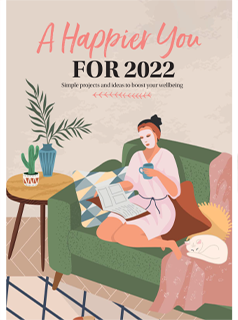It’s the curse of modern living, but don’t let stress get you down – try these six stressbusting natural therapies to put your mind and body at ease, says Allison Jacobs
It’s the curse of modern living, but don’t let stress get you down – try these six stressbusting natural therapies to put your mind and body at ease, says Allison Jacobs
1. Hypnotherapy
Firstly hypnotherapy helps by getting you physically relaxed. If you are stressed your body is tense, so hypnotherapy counteracts this physical tendency. Secondly hypnotherapy works on your mental attitude, making positive suggestions about new ways to think about your problems.
Beat stress:
“If you’re stressed at work, the quickest way to de-stress is to take a break!” says Ursula James, a clinical hypnotist and teacher. “Sitting in one position ‘locks’ in the stress posture, so that the next time you sit at your computer you’re already stressed as your body remembered the posture. Or, lean right back into your chair, have a good stretch, and say to yourself ‘I am an amazing person.’ Techniques for home if you are really stressed include going on a fast – a news fast. No TV, radio or newspaper, no surfing. Three days without additional input should help to calm you down.”
For more information visit hypnova.co.uk
2. NLP
Neuro-linguistic programming (NLP) is all about how we interpret the world around us; seeing things how they really are; not worse, not better. “In effect, stress is not a result of a situation or event but our perceptions of what that situation or event means to us,” says Denise Collins, an acredited NLP trainer. “Not everyone finds the same things stressful; some people are so terrified of flying they can’t get on an aeroplane, while some people jump out of them for fun! It’s our perception that causes the stress, not the situation.
Beat stress:
“A simple NLP techique is known as reframing,” says Denise. “It’s literally like putting a different frame around a picture to change the way it appears. What this means in practice is that you learn how to challenge your own first immediate reaction to a situation. Question what the facts are as opposed to beliefs, opinions, assumptions and attitudes. Ask yourself ‘How else could I think about this?’ ‘Will this still be a problem in say, two years’ time?’ and ‘What might someone else think or do in this situation?’ Also notice where you might be physically holding tension in your body as a result of experiencing stress. Dropping your shoulders, getting up and moving around helps.”
For more information visit hummingbirdeffect.com
3. Bach flower remedies
Devised in the 1920s and 30s, Edward Bach’s eponymous flower remedy system contains a total of 38 remedies, each associated with a human emotion.
Beat stress:
“One of the 38 Bach remedies, elm is for moments when normally capable people feel overloaded by the weight of their responsibilities,” says Stefan Ball, author of many books on the subject. “Elm helps us get back in control of things without getting too despondent. Add two drops of elm to a glass of water or a cup of tea, and sip until you feel more on top of things. You could also add four of five drops to your bathwater.”
For more information visit bachcentre.com
4. Reflexology
Renowned for stress relief, reflexology is the practice of applying pressure to specific areas of the feet and hands which correspond to certain areas of the body, stimulating healing.
Beat stress:
“A good technique is to work on the endocrine system,” says Lesley Humphreys, a practising reflexologist, and graduate of the School of Natural Health Sciences. “This consists of the pituitary gland, located in the middle of your big toes, pineal gland, located at the top of your big toes towards the inside of your feet, thyroid gland, at the base of your big toes and second toes and an inch down, thymus gland, just below the thyroid, adrenal gland, located in the arch towards the inside of your feet, pancreas, lying slightly lower down from the adrenals, and ovaries and testes, which are both on your ankle bones.
“All these parts regulate the rhythms of life, your emotions and drives, and when they are working properly you create homeostasis; the state of chemical and emotional balance and active health of the body. Thumb walking on all these areas, in a caterpillar-like motion, while bending the toes back to thin out the flesh and to open up the reflex areas, will start to reduce the stress and restore the balance. Also several crosshatches (criss crosses) in this large area of the arch is good, to cover all the points one way in both directions. It’s always nice to end on massaging the solar plexus, located at the top of the soft arch of the feet, in the middle.”
For more information visit naturalhealthcourses.com
5. Alexander technique
This technique is a way of learning how to move mindfully, and in doing so ridding the body of any harmful stress and tension it may be holding on to.
Beat stress:
“Lie down at some point every day to relax, preferably in the Alexander position,” says Suzie Element, who runs the Brighton School for Alexander Technique. “Lie on your back with your head supported and your knees bent and your feet on the floor. This is the best resting position for the stress and you will soon start to feel the benefits. Also, take regular breaks from your desk. Every half hour stand up, and walk around. Every ten minutes stop and look around you while relaxing your arms – it will save you a lot of discomfort.”
For more information visit alexandertechnique.org.uk
6. Herbalism
Smell is the only sense that has a direct effect on the brain via the olfactory nerve, so essential oils are a really great way to ease feelings of stress. Lavender calms and relaxes, geranium lifts the spirits and clarysage soothes the mind to promote calmness. They smell good too!
Beat stress:
“De-stress with a 10 minute pamper session and, using a few drops of Lavender essential oil in a carrier oil, massage it into your temples or feet,” says Dee Atkinson, a medical herbalist. “Lots of stress is held in the temples and back of the neck so relax your shoulders by having a bath. Use handfuls of Epsom salts with five drops of essential oils and light a candle to evoke a relaxation. Oats help you bust stress as they are restorative to the nervous system, as well as good-quality dark chocolate which promotes serotonin. Mix loose rose petals, lime flowers, chamomile and lemon balm to make up your own tea blend. The ceremony of tea is a relaxation technique itself.”
For more information visit napiers.net























